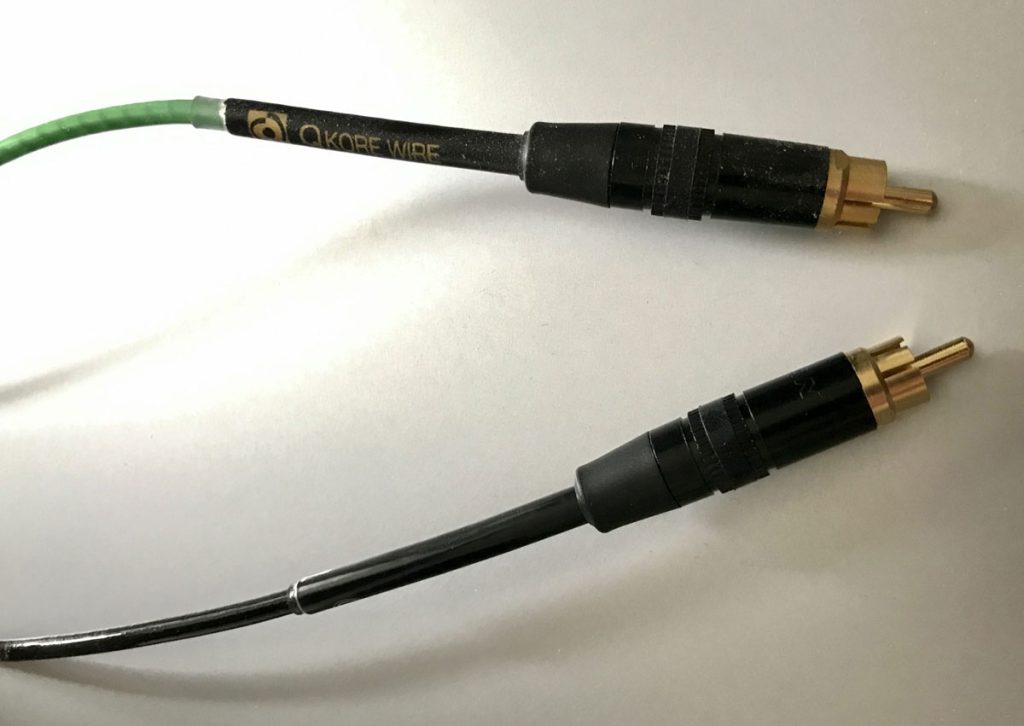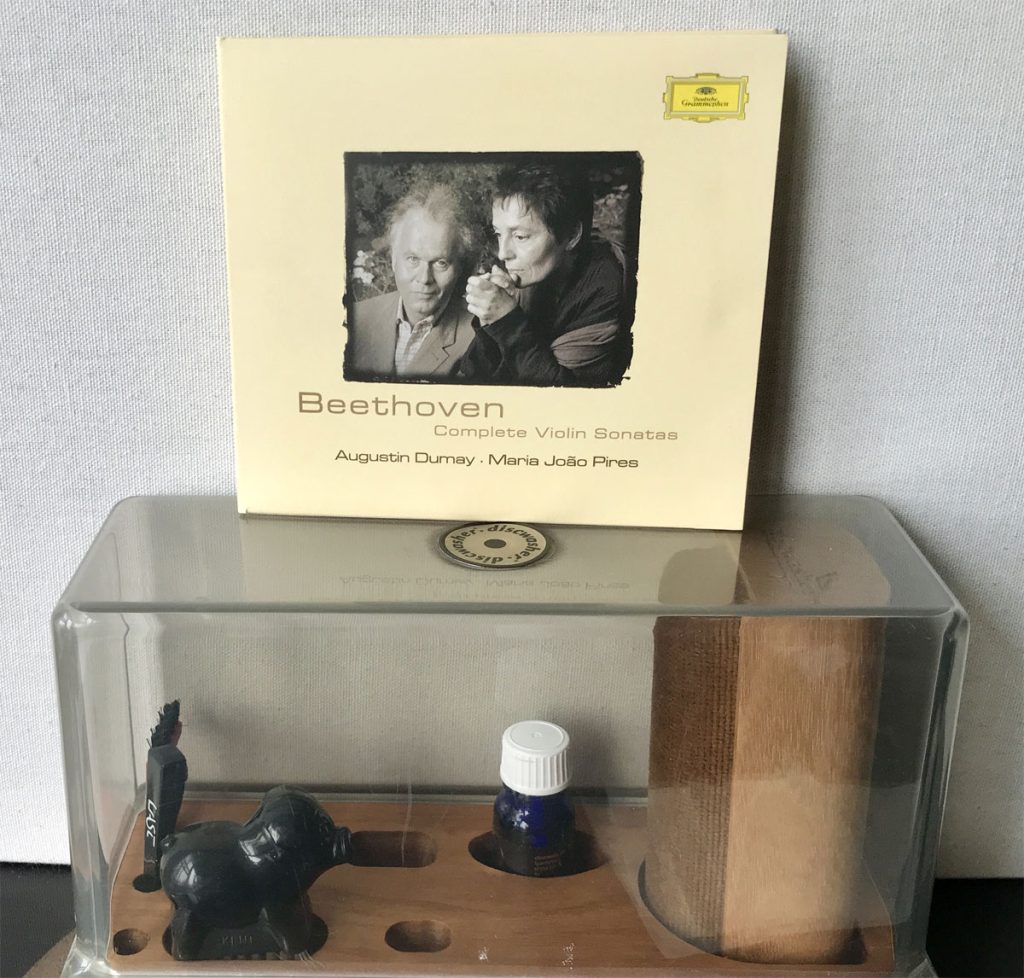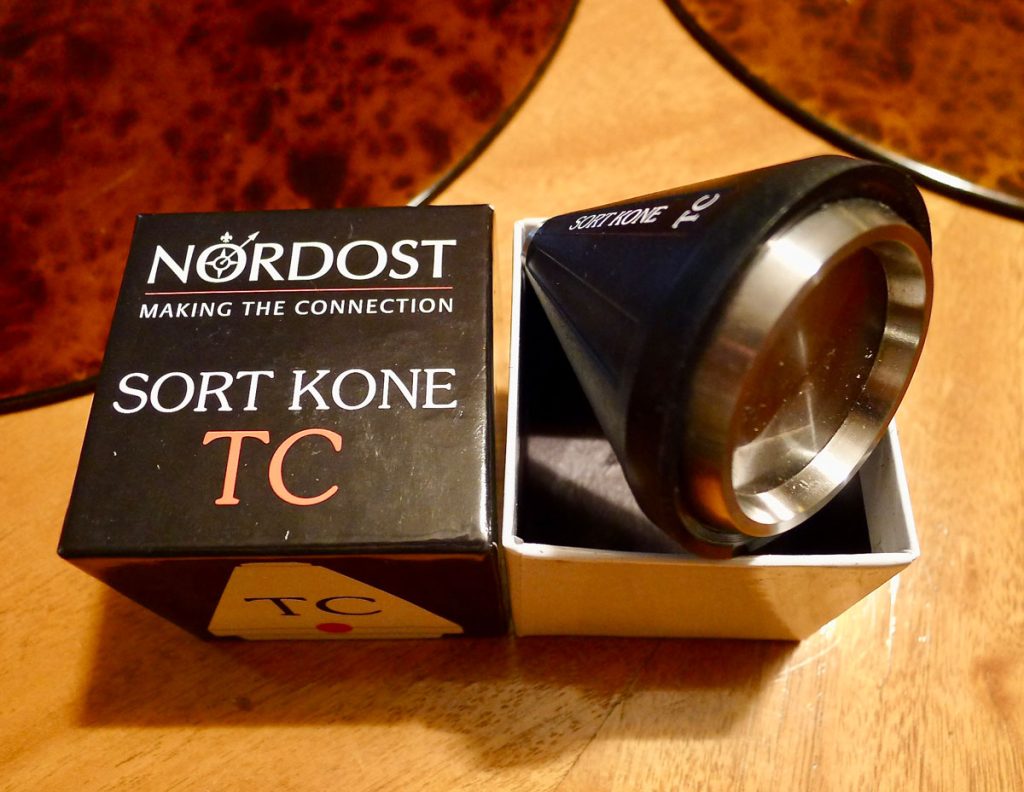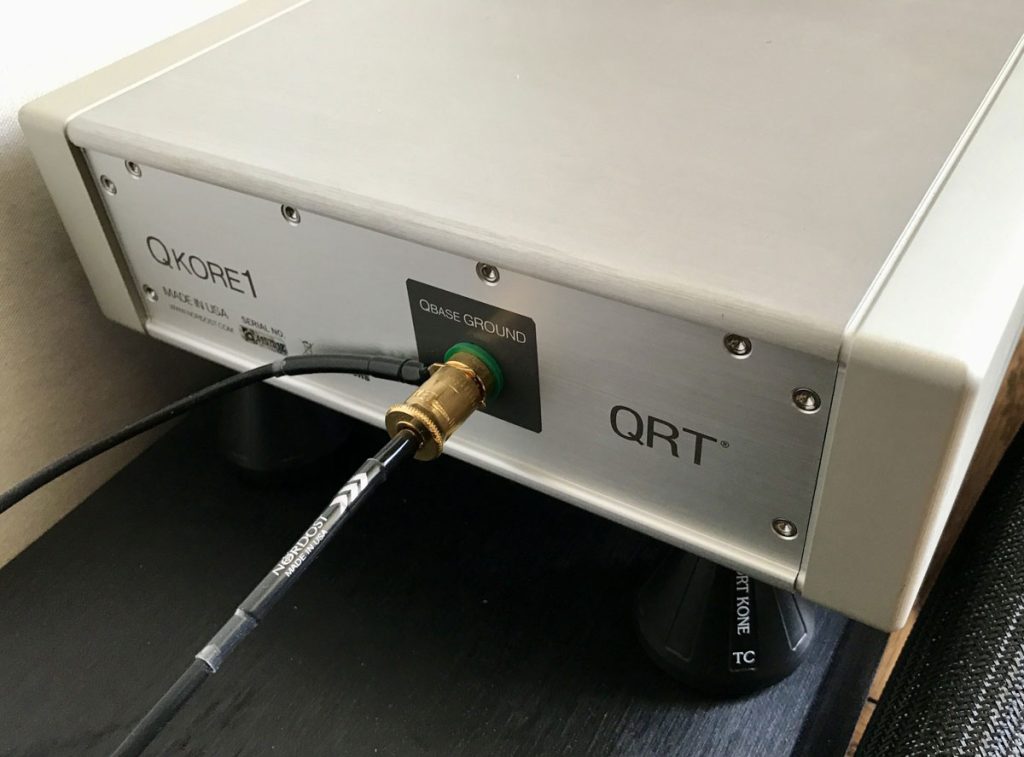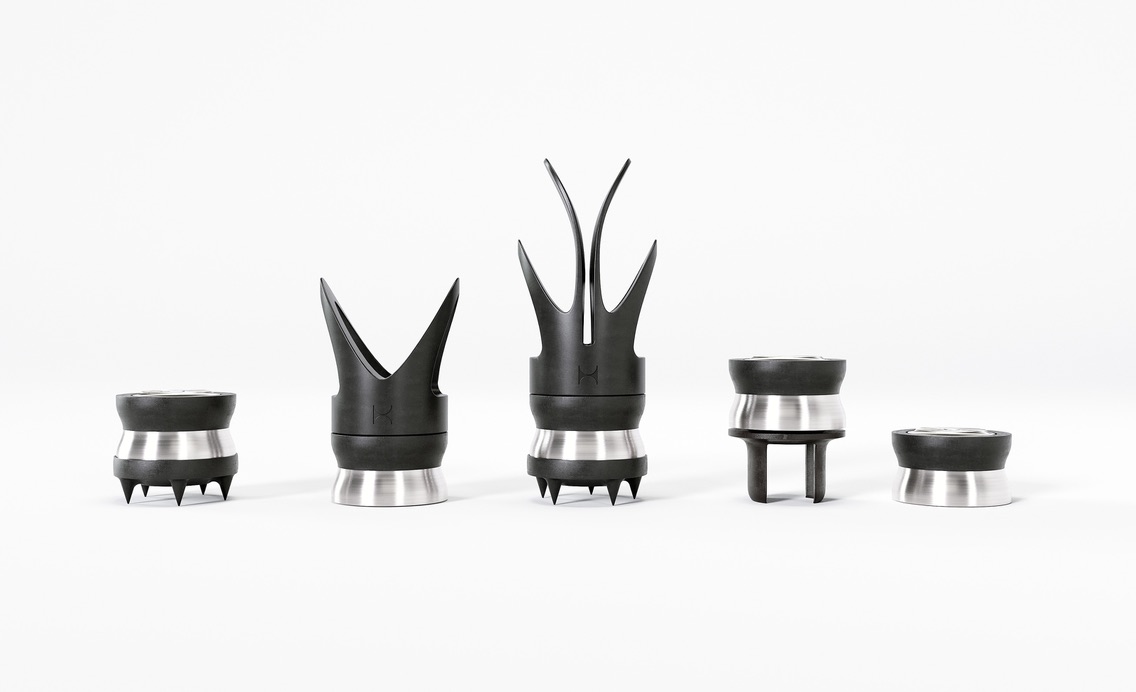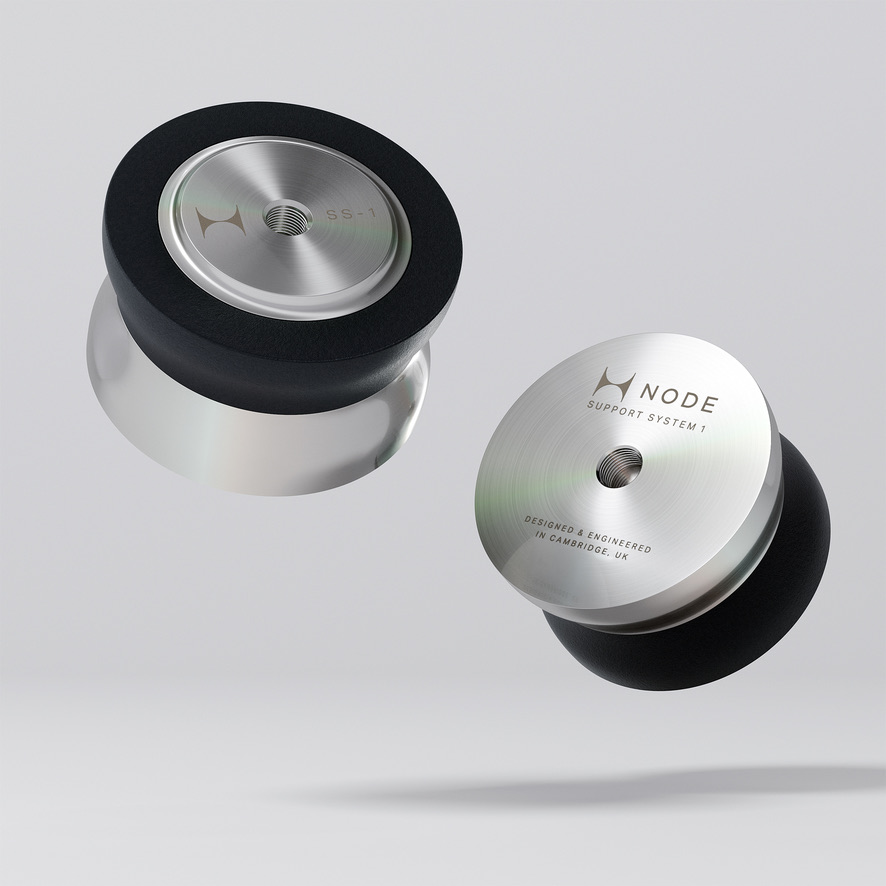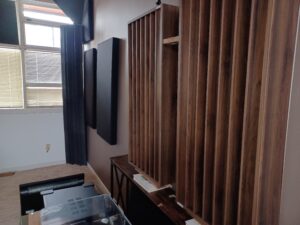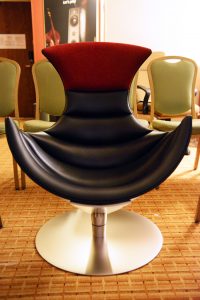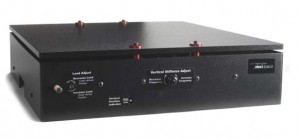A fellow-traveler who delights in extracting the max from his gear relayed this narrative the other day. "When guys come over for a listen, they often comment they never heard XYZ gear sound this good. Why is that? I tell them it is the attention paid to the little things—like premium fuses, RFI noise stopper caps, careful routing of wires—that can make a system extraordinary. That is the essence of this hobby. People don't realize buying the best gear is only the starting point." Yeah, there is a ton of truth in that. Maintaining a great system requires lots of TLC and is an ongoing process.
One accessory that really pops for me is the QKORE Ground Unit from Nordost. There's a reason why ground noise dissipation systems are hotly competitive and steadily gaining market visibility. These things work and the consumer is voting with his billfold.
In the Nordost system, very low-resistance wires connect each component to a central point, the QKORE. These QKORE Wires attract high-frequency noise and voltage-generated magnetic fields riding on the ground inside your components by offering them a path of least resistance out of the component and into the QKORE chassis, where they are deposited at a Low-Voltage Attractor Plate (LVAP).
Accessories for the Accessory
Support Footers for the QKORE
The QKORE chassis is well-constructed and resonance tuned, made from billet aluminum, and looks like a small, brushed silver component. For some reason it is highly sensitive to what's supporting it. I put in many hours listening to footers and platforms, searching for just the right one. Why a set of isolation footers or platform under an accessory chassis that only interacts with a trickle current of ground artifacts should have such audible impact on the sound left me scratching my head. Contemplating this got me nowhere, so I stopped thinking about it and inquired. Nordost provided this explanation (text has been lightly edited):
The QKORE has two functionalities: electrical and mechanical. What you are describing is due to the mechanical aspect of the QKORE.
The electrical function is, of course, the directional drainage of tiny, unwanted voltages. The mechanical function, which is equally important, is draining mechanical energy (resonances). Mechanical resonances are guided away from the chassis of components and travel through the QKORE Wire(s) into the LVAP(s)…The LVAP(s) then has a mechanical connection with the chassis of the QKORE which it's housed in. The final drainage step is affected by the surface that the QKORE itself rests on.
I have a problem with the concept that, "Mechanical resonances are guided away… and travel through the QKORE Wire(s) into the LVAP(s)…" Be that as it may, the sensitivity to the support is undeniable. And it's not just the support: the wires matter, too. Competing companies offer multiple levels just as they do with interconnects, and they can get expensive. Nordost got on board recently with Premium QKORE Wire.
QKORE Wire: Cosmetics and Installation
The original QKORE Wire is described on the website as follows:
"[The QKORE Wire]…utilizes Nordost's patented Micro Mono-Filament technology, combined with extruded FEP insulation, and constructed with a 16 AWG, silver-plated OFC, solid core conductor. The QKORE Wire can be terminated with the following connectors: spade, banana, male-XLR, female-XLR, BNC, RCA, USB A, USB B, and RJ45."
The specs for the Premium QKORE Wire read the same with one exception: 14 AWG conductor gauge. The variety of terminations, the hardware, the feel and handling—all are the same. Lightweight and rigid, it easily bends into shape, then retains any bends you make. All in all, rather easy to work with. Cosmetically, the new wire has a black outer sheath, while the original is bright green.
While we're on the subject, what about the rest of the parts? The QKORE chassis has fine WBT binding posts. Why not high-quality connectors for these wires? What about shielding and damping? An email clarified these choices (text has been lightly edited):
At Nordost we use a philosophy called mass-matching for our connectors. Since the QKORE wire is a single, solid conductor without shielding, a low-mass connector is needed. You can see that same philosophy in practice throughout our cable ranges.
Regarding shielding and damping: actually, both of these would counteract the mechanical effects of these particular cables. Remember, the point of the QKORE Wire is to transfer all of the electrical and mechanical energy (resonances) to the LVAP. Both damping and shielding materials would absorb a lot of those resonances along the way, much like when you flick a wind chime that is freestanding, vs. holding the wind chime firmly with your hand.
Round One: Premium Wire on the CH Precision M1.1 Monoblocks
To make comparisons easy, I limited my first test to my CH Precision M1.1 monoblocks. Would you believe the QKORE wires exhibited classic cable burn-in? Initially, it was dark and tight. Next day, it became limber, lightened up, and stabilized. I found this disturbing. In my mind's recesses, the soundtrack of The Twilight Zone was unspooling again.
The Black and the Green
Let's cue up the third movement of Sonata No. 10 from Beethoven Complete Violin Sonatas, with Augustin Dumay, violin, and Maria João Pires, piano (DG 471 4952 1), two of my favorite artists. This set is a splendid outing—highly recommended for chamber music enthusiasts! Dumay is not timid, and when he plays forcefully on the E string, it challenges the system to hold on without losing its grip. It is in the handling of Dumay's top notes that the premium wire distinguishes itself.
With the original wire, the more vigorously Dumay plays, the more these passages are overladen with artifacts. It gets to the point where it doesn't sound like a violin anymore. (And before the original wire—that is, before I had the QKORE—these notes could be cringe inducing.) With the premium wires on my amps and the original everywhere else, these notes hit with force, but clearly some of the artifact content has been dealt with. This is a big deal, not to be under-appreciated.
The premium wire sharpened focus and made the action very easy to follow, while leaving image size and body mass the same. Instruments have a sparkle, a lit-up-from-within quality, especially when they play loud. There was more brilliance—or was it brightness? Lynn thought the treble was a bit more exposed, less integrated with the mids. I added that tonal balance became somewhat lighter with the premium wire on my amps.
Round Two: The Power Distributors
Next, I made the switch on my HB Cable Design and Nordost QBASE power distributors. The ground post on power distributors is AC from the wall (Nordost refers to this as the primary ground); the ground I tapped in Round One on my amps is DC, or post transformer (which they refer to as the secondary ground).
Swapping QKORE wires on the power distributors (primary ground application), results largely conform to Round One on the amps (secondary ground). Foremost was control and purification of the treble, while dynamics kicked in strongly. One difference from Round One was now the original wire exhibited a brighter tonal balance and a little non-linear bump in the treble. The premium wire didn't have that issue and is super coherent, all frequencies arrive together with equal weight. Stated again for clarity: the premium wire on my amps imparted a brighter tonal balance; the premium wire on the power distributors tilted darker than the original wire.
Round Three: The Front End
Moving on to source components, I installed premium wire wires on my entire front-end. For ease of comparison, I'm going to limit the A/B swap to just the CH D1 transport and CH C1 DAC.
As I said, Dumay plays energetically (and Pires tends to play soft), creating a lot of dramatic contrast. With the entire system decked out in premium wires, the violin's macros hit powerfully and an entirely new insight is revealed. Dumay is not at full-out fff very often. I can discern gradations of forte, as he constantly adjusts the tension and speed of the bow on the strings. This is a really nice. At this point the artifact content is undetectable; I'm tempted to say the treble is clean. But I know better than to be definitive: let's just say it's as clean as I've ever heard it.
Updated Recommendations for CH Precision Owners
In my first go round with the product (HERE), I took each of my CH Precision components in turn and went through the tedious exercise of determining where to insert the QKORE wire. While my gear hasn't changed, the recommendations have. For the D1 Transport and C1 DAC, instead of the XLR jacks on the rear, use the black "Signal Ground" banana connector. Alternately, you can use an available RCA jack. (The "Signal Ground" jack functionally taps the same ground as the RCA—they are equivalent.) The swap to banana terminated premium wires into the "Signal Ground" plug on the transport and DAC upped the purity and precision.
For CH Precision 10-Series owners, a yellow "Chassis Earth Ground" jack has been added on the L10 and M10 external power supplies. You can connect these to a primary ground post on the QKORE. For the L10 and M10 main chassis use the "Signal Ground" post to connect to a secondary QKORE ground post.
Notes: 1) If you currently use the supplied black plastic jumper to straddle the two black ground posts on the CH component chassis, it can be put aside. 2) Best practice dictates placing the component in standby when connecting any wires or cables to a component. 3) Cover any open XLR jacks with RFI stopper caps.
Accessories: Which Footer Should You Use?
The Sort Kone
The communication from Nordost also said:
Ideally, you should be placing your QKORE on Sort Kones (if you flip your QKORE upside-down, you will see indents…only one if you still have the original footers attached, but those can be removed to reveal up to 5 indents). These indents are designed with our Sort Kones in mind.
I had tested Nordost's three levels of Sort Kone footers in my first go round with the QKORE. They made an impact, but it wasn't what the system needed at that time. I like the Marigo Audio Labs L2 Isolation Platforms for the purpose. Well, tempus fugit: Nordost sent them along for another shot. The road had a couple of twists and turns, but this time there was a positive outcome.
The tip of the Sort Kone is a flat surface about 1/4" wide (not a sharp point) and fits snug into the indents on the bottom of the QKORE, creating a very stable support. The BC Sort Kone (bronze post and ceramic ball) is noted for a warm, full tone. A trio of BC Kones replaced the Marigo platform under the QKORE for my power distributors. The BC imparted a bump in lower midrange response and made the surface of the stage too smooth. Then I tried a trio of TC (titanium post and ceramic ball). Texture and detail came right back, but the midrange seemed to be under-represented, and there was less solidity on the bottom. Neither Sort Kone outperformed the Marigo board.
Marigo platform, TC Kones, QKORE with Premium Wires
Tweaking is my nature, so here goes: Why not make a sandwich? Wouldn't you know it, this layered approach—Marigo platform, TC Kone trio, QKORE—was glorious! I swapped another Marigo/TC sandwich under the QKORE for my amps, to test it on a secondary ground application. Oh, yes—it was very fine here, as well. The bottom broadened out; the midrange acquired a lushness evidenced by woody tone on the strings and overtones on the piano. It felt like all burners were firing—just by optimizing the support below the QKORE. That familiar soundtrack was spooling in the back of my mind again.
I went back to the BC Kones on the Marigo platform. The smoothness and reduction in texture still bothered me.
So I was done—until the manufacturer called for the return of the Fono Acustica Armónico cables I was using. A set of Audience frontRow went in and upset the synergy, because the frontRow has less mid-bass warmth and is more resolving. It kind of doubled up the characteristics of the TC Kones, making these too much. So the BC went back in and were just right. Yeah, it's all system dependent.
Conclusion
After you've been around for a while, you come to see the value of old epigrams, which I had casually dismissed in my youth. Like Louis Armstrong's, There are some people that if they don't know, you can't tell them. I'm saddened to say that would apply to most of my present acquaintances. Or, how about the old Joni Mitchell lyric, You don't know what you've got till it's gone. Good stuff like this grows on you.
I knew I had dealt a significant blow against the RFI daemon when I installed the QKORE system a year ago. That left me unprepared when a new trove of artifact content was exposed, but I only knew this after putting in the Premium Wires. It takes a product advancement to uncover what lurks, sonically speaking.
The major impact of the Premium QKORE wires is purity of the high frequencies. Secondary effects include increased image mass, a boost in dynamics, and dialing in focus. On the subjective side, there's more drama and impact.
I'm tempted to say the system is clean after installing Premium Wires everywhere, but I won't fall into that trap again. You can be sure the RFI daemon lurks and will show up again after the next advance goes in, whatever that might be. That there will be a next advance is extremely likely, as RFI combating is on the frontlines.
If you've already invested in the Nordost QKORE solution, this one's a no-brainer. For what you will get, they're not asking a lot.
Original QKORE Wire
Retail: $219.99/1 meter
Premium QKORE Wire
Retail: $319.99/1 meter
Bronze/Ceramic Sort Kone
Retail: $157.00/each
Titanium/Ceramic Sort Kone
Retail: $388.99/each
Nordost





